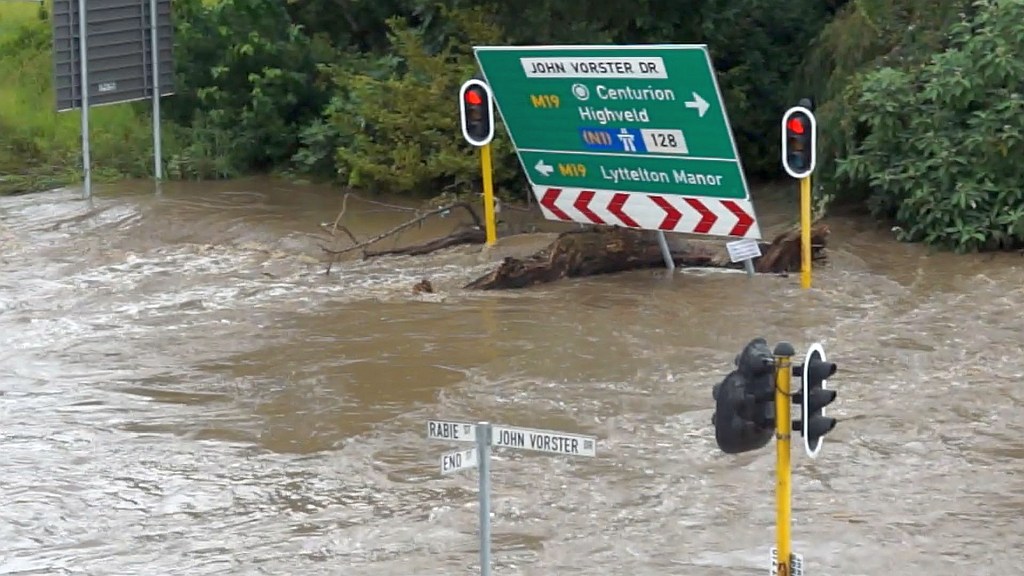Best of Johannesburg
How to Tell If Your Area Is Flood-Prone Before Moving to or Living in Joburg 2025

Flooding in Johannesburg isn’t rare anymore, and it doesn’t just affect riverbanks.
Whether you’re planning to move, buy, rent, or already live in Joburg, knowing your suburb’s flood risk could save your car, your couch, and your peace of mind.
Also read: How to Prepare Your Car for Flash Floods in Gauteng 2025
It’s Not Just About Living Near a River
While the City of Johannesburg is classified as having a very low urban flood hazard by tools like ThinkHazard!, that’s only part of the story. In 2025, the biggest flood threats come from overwhelmed stormwater drains, blocked culverts, or hard surfaces that push runoff into roads and homes.
In March this year, parts of Randpark Ridge, Honeydew, and Weltevreden Park saw major road closures from flash floods, and those aren’t even high-risk flood zones on paper.
Step 1: Use These Tools to Check Flood Risk
ThinkHazard!: City-wide risk level estimates
FloodMap.net: Elevation and river proximity
African Environmental Development (AED): Detailed flood line assessments
City of Joburg Drainage/GIS Department: Infrastructure and stormwater mapping (available by request)
These tools can help you determine if your street or home is near a 100-year flood line or in a drainage choke point.
Step 2: Consider Your Suburb’s Elevation and Layout
Flash floods hit harder in low-lying zones, near canalised rivers like the Jukskei or Klip. Suburbs on hills or ridges, like Northcliff or Linksfield Ridge, tend to fare better.
If your home is at the bottom of a slope or next to a storm drain, even a short downpour can cause pooling water and structural damage.
Step 3: Talk to Locals; They Know the Real Story
Local residents are your best source of truth. Ask:
-
Has this street flooded before?
-
Do gutters or storm drains overflow in summer storms?
-
Are neighbours using sandbags or flood barriers?
Also check community WhatsApp groups or Facebook forums during big rain events. You’ll quickly see which roads flood first and which streets stay safe.
Step 4: Don’t Rely on Standard Home Insurance
In South Africa, standard home or renter’s insurance doesn’t cover ground-level flooding from surface water, storm surges, or drain backups. You’ll need specific flood cover, which few people think about until it’s too late.
Even if you’re in a “low risk” area, more than 20% of flood claims come from properties outside mapped flood zones, according to international data.
Step 5: Know That Climate Change Is Making It Worse
The risk is growing. Climate change has increased rainfall intensity across Gauteng, and flood-prone areas are expanding. Development and illegal dumping often block Joburg’s ageing drainage systems, turning a short storm into a neighbourhood disaster.
Informal settlements, townships, and areas with poor infrastructure are especially vulnerable, but even middle-class suburbs are seeing more water damage year after year.
Flood Risk Checklist Before You Move or Buy:
| ✅ What to Check | 💡 Why It Matters |
|---|---|
| ThinkHazard or AED flood maps | Broad or detailed risk information |
| Elevation on FloodMap.net | Tells you if your area is low-lying |
| Nearby rivers or culverts | High overflow potential |
| Community forums or local feedback | Shows what really happens during storms |
| Insurance policy small print | Confirms what’s not covered |
| Municipality drainage upgrades | May reduce risk in future |
Local Reality: Don’t Be Caught Off Guard
Whether you’re moving into a Sandton high-rise or a family home in Parkhurst, your suburb’s flood profile matters. One storm can back up a poorly maintained drain and flood your garage, your garden, or your ground floor.
Do your homework. Ask the uncomfortable questions. And always assume that a street that’s flooded before will likely flood again.
The Bottom Line
Johannesburg’s overall flood risk may be “low,” but the on-the-ground reality in 2025 tells a different story. Flash floods, urban runoff, and poor drainage mean even so-called safe suburbs can go under water.
If you’re planning to live in Joburg, or already do, knowing your area’s flood risk helps you choose smarter, protect your property, and stay dry.
Also read: Driving in the Rain in Joburg: Safety Tips That Could Save Your Life SA 2025
Follow Joburg ETC on Facebook, Twitter , TikTok and Instagram
For more News in Johannesburg, visit joburgetc.com
Featured Image: African Environmental Developement















